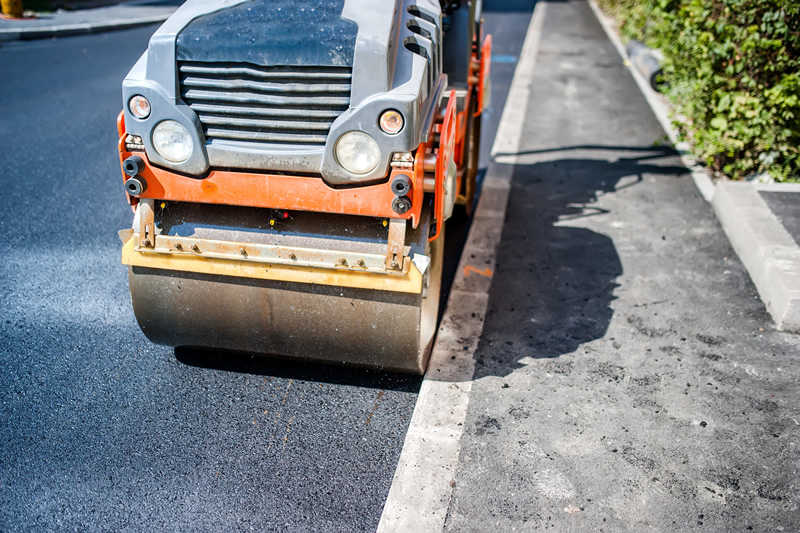The Ultimate Guide To A1 Professional Asphalt & Sealing Llc
The Ultimate Guide To A1 Professional Asphalt & Sealing Llc
Blog Article
The Basic Principles Of A1 Professional Asphalt & Sealing Llc
Table of ContentsGet This Report about A1 Professional Asphalt & Sealing LlcLittle Known Questions About A1 Professional Asphalt & Sealing Llc.The Of A1 Professional Asphalt & Sealing LlcNot known Facts About A1 Professional Asphalt & Sealing LlcA1 Professional Asphalt & Sealing Llc for Beginners

The oil in a car engine is not simply oil. It has a range of ingredients to enhance the vehicle's efficiency. These include polymers, thickness modifiers, heat stabilizers, additional lubricating substances, and put on additives. The REOB has all the additives that remained in the waste oil in addition to the wear steels from the engine (generally iron and copper).
By making many blends making use of various REOB samples and various asphalt binders, the variations mostly can be averaged out. A number of States offered samples of well-known REOB composition to TFHRC researchers, that evaluated the examples to compare the percent of included (understood) REOB to the located (checked) quantity. The analyses revealed a comparable portion of added and discovered REOB.
Some Known Incorrect Statements About A1 Professional Asphalt & Sealing Llc
None of those States recognized that the asphalt they were buying included REOB. One State insisted its samples had no REOB - https://mcdoihl-mcdesly-sniagh.yolasite.com/.
Of the 1,532 samples examined, 12 percent consisted of REOB, and some had appreciably high degrees of it at 1020 percent. The highest degree was 34 percent in a sample from Texas, which TxDOT had actually utilized in a patching substance. This testing additionally disclosed the existence of phosphoric acid in 11 percent of the samples, and 2 percent contained ground tire rubber.
2 years earlier at TRB's annual meeting, the Federal researchers held an REOB workshop and offered the searchings for of their research laboratory evaluations to a standing room-only group. Some agencies do not especially ban REOB, they do impose physical tests that preclude its useeffectively a ban. Others do not prohibit it by spec, but have contracts with asphalt suppliers to stay clear of making use of REOB
The Single Strategy To Use For A1 Professional Asphalt & Sealing Llc
A handful do allow REOB, some within particular limits. As an example, Ohio and Texas restriction levels to much less than 5 percent of the asphalt. To create a dependable test method that all States can make use of, the TFHRC researchers established up a round-robin test strategy. The participants are 11 State highway firms (Illinois, Massachusetts, Minnesota, Mississippi, Montana, North Carolina, Oklahoma, South Carolina, Texas, Vermont, and Wyoming), 2 independent screening laboratories, the Ministry of Transportation in Ontario, Queen's College in Ontario, and an Ontario paving service provider.
The participants are testing the examples separately utilizing the guidelines offered by the TFHRC researchers. The output will be a suggested AASHTO test method that any type of State can take on and use.
The pavement with REOB, which is located 0.6 mile (1 kilometer) from the pavement without REOB, has the same subgrade, website traffic thickness, and climate. The section of Highway655 with 5 to 10 percent REOB showed significant cracking. In this instance, the presence of REOB was the recognized source of breaking at a reduced temperatures.
A section of examination sidewalk in Minnesota (MN1-4) discovered to include REOB also split prematurely. The pavement done well for the initial 3 to 4 years, yet after that began to split.
9 Easy Facts About A1 Professional Asphalt & Sealing Llc Explained
The examinations were not extensive, yet they revealed that at levels of 6 percent or more, the tensile stamina of the asphalt went down dramatically. At a degree of 3.5 percent REOB, the variation in the physical examination methods was higher than the impact of REOB. It was tough for scientists to analyze whether REOB was existing. https://visual.ly/users/a1asphaltsealng/portfolio.

One binder parameter thought about is the distinction between the low temperature important spec temperature level for tightness (S) in the flexing beam rheometer and the bending beam of light rheometer creep slope (m-value) noted as Tcritical. TC = TC (S) TC (m-value). Analysis of this parameter is still continuous. Two independent research teams, one from AASHTO and the other from the Asphalt Institute, wrapped up that even more research is needed on making use of REOB in asphalt.
Formerly, all asphalt testing determined design properties such as rigidity. These examinations do not reveal what materials had actually been contributed to the asphalt. One example obtained throughout the TFHRC research study had a really unusual analysis. The sample had the complying with examination outcomes: Superpave PG 64-28 with a heat grade of 67.3 Tcritical on the bending light beam rheometer was 6.7 degrees Celsius.

A1 Professional Asphalt & Sealing Llc - Truths
These outcomes show there are weak points in the standardized design screening protocols that might be made use of. The producer might have a financial advantage and the product passes all the standard examinations, however the product might not be helpful to ensuring long-lasting performance. To address this issue and the development of brand-new asphalt additives and extenders, TFHRC is beginning a research study program to utilize handheld spectroscopic devices, x-ray fluorescence spectroscopy, and Fourier change infrared spectroscopy to make it possible for evaluations to be done in the area as opposed to having to take samples back to the laboratory.
Report this page